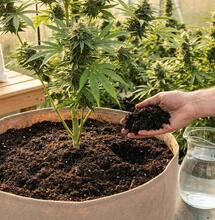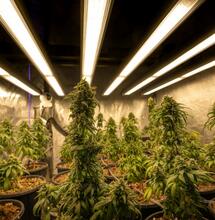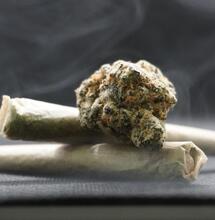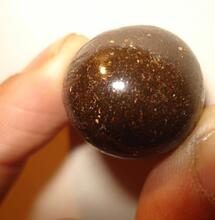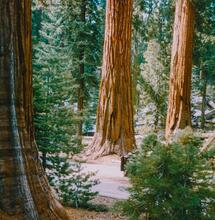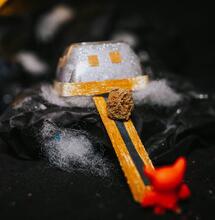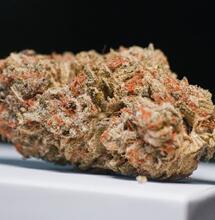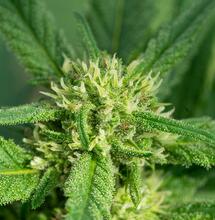Haze Cannabis History: From Pure Sativa to Modern Hybrids

Haze is more than just a legendary name in breeders’ catalogs — it represents the bridge between the tropical sativas of the 1960s and 1970s and today’s modern hybrids. Born on the California coast and later refined in Europe, Haze has made its mark with its unmistakable aroma and a ‘high’ celebrated for its mental clarity. Its story, often surrounded by myth, is really one of careful breeding, seed sharing, and a cannabis culture in transition.
How Haze Cannabis Came to Be: Breeding and Background
In the late 1960s, California was a true cultural hotbed — the perfect setting for Haze cannabis to emerge. It was the height of counterculture, and growers freely exchanged seeds, experimenting along the way with landraces brought home from various parts of the world by globetrotters.
Two local cultivators, later dubbed as the Haze Brothers, carefully selected late-flowering plants with distinctive scents. According to reports from the time, they mainly grew in greenhouses around Corralitos in Santa Cruz County, in order for plants to finish flowering around December or January. Their harvests were considered “connoisseur” quality — selling for up to $200 an ounce in the 1970s, and even $500 for particularly rare flowers.
They also gave descriptive names to several of their phenotypes, which included Purple Haze, Silver Blue Haze, and Lime Green Haze. The genetics of these early haze cultivars reportedly incorporated Colombian strains (Highland Gold, Wacky Weed), a South Indian strain from Kerala, and Mexican strains selected to mature under glass at the latitude of Santa Cruz (36.9° N).
The Original Haze remains poorly documented, although there is a general consensus that it was a cross of pure landrace sativas: first a Mexico × Colombia cross, then enriched with Thai and probably an Indian strain from the Kerala region. This cocktail could explain its famous traits: prolonged flowering time (12–16 weeks), intense aroma reminiscent of incense, hardwood, and citrus, and a stimulating cerebral effect.
Another theory is that Original Haze represents a 100% sativa hybrid developed over three growing seasons:
Year 1: Colombia × Mexico females × imported sativa male
Year 2: A South India (Kerala) male strain was used
Year 3: The Thai male strain was also used
In terms of its chemical composition, Haze cannabis typically contains monoterpenes (terpinolene, ocimene, α/β-pinene, limonene) and sesquiterpenes (β-caryophyllene, humulene), with resin/incense notes; ratios vary depending on the selection.
The War on Drugs Changed the Game
By the 1980s, Americans had lost many of their cannabis freedoms. Changes in the judicial system, prompted by the escalation of the War on Drugs, profoundly disrupted the cannabis ecosystem by creating huge risks of criminal prosecution. In California, in 1983, Operation CAMP increased the number of eradications carried out by helicopter. In 1989, Operation Green Merchant targeted grow shops, media outlets, and thousands of growers, with searches, asset freezes, and arrests. This precipitated a shift to indoor cultivation and pushed some players to seek a more viable framework for preserving and working with strains — which is how several enthusiasts turned to the other side of the Atlantic.
Thanks to its ‘tolerance policy’ introduced in 1976 with revisions to the Opiumwet, the Netherlands allowed coffee shops under certain conditions, along with small-scale possession. This created an environment where the retail sale and circulation of seeds could be organized more openly. Around 1984, the late Sam the Skunkman (David Watson) settled in the country with stocks including Original Haze and collaborated with Robert C. Clarke (Sacred Seeds/Cultivators Choice) to preserve O-Haze diversity through extensive open pollination and minimal selection (O-Haze was treated as the primary breeding material).
Batches of Original Haze have been circulating since 1976 via Sacred Seeds, and in the Cultivators Choice #4 catalog (Fall 1985), O-Haze is listed as a pure sativa, described as an inconsistent hybrid (about 10% spectacular plants, 75% “good,” 10% “weak”), with a sweet taste and an energizing high, but very late-maturing and unsuitable for outdoor cultivation in northern climates.
Haze Cultivars Required Adaption in Europe
Some problems persisted, however. Dutch breeders often faced cramped indoor spaces and temperate winters, which meant Haze had to be reimagined. The goal in the 1980s and 1990s was to cross Haze with more Indica/Afghan genetics to shorten flowering time, make the plant more compact (stockier and discreet), and introduce new traits.
At Nevil Schoenmakers, the Haze A/B/C triad served as the backbone: A and C, two key males, were used as building blocks for hybrids that were easier to manage (in terms of stretch, maturation, and plant structure). This led to the creation of the first NL/Skunks × Haze hybrids and ultimately the iconic Neville’s Haze and Super Silver Haze.
- A Haze expresses spice (Colombian register)
- C Haze leans towards earth/cocoa/Thai
- Female B Haze was discarded
Ultimately, A and C became the true pillars of the new Haze lineage.
Many alternative theories have emerged since Haze cannabis was created. But above all, Haze tells the story of an encounter between tropical strains and determined growers under contrasting legal landscapes. Paradoxically, the crackdown in the U.S. during the 1980s accelerated the strain’s transfer to a pragmatic haven — the Netherlands — where it could be preserved and crossed with other lines, becoming a cultivar that is more practical to grow without losing its distinctive traits. This alchemy, from the original late-flowering Haze to modern hybrids, has made its genetics accessible to far more cannabis growers and users.
Haze cannabis grow guides from Soft Secrets:
Soft Secrets France originally reported on this story.
